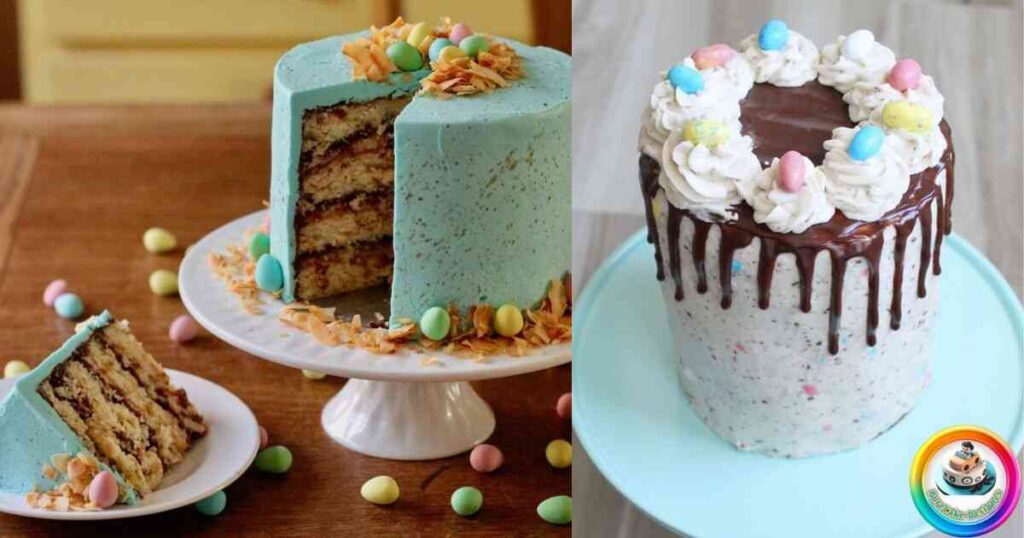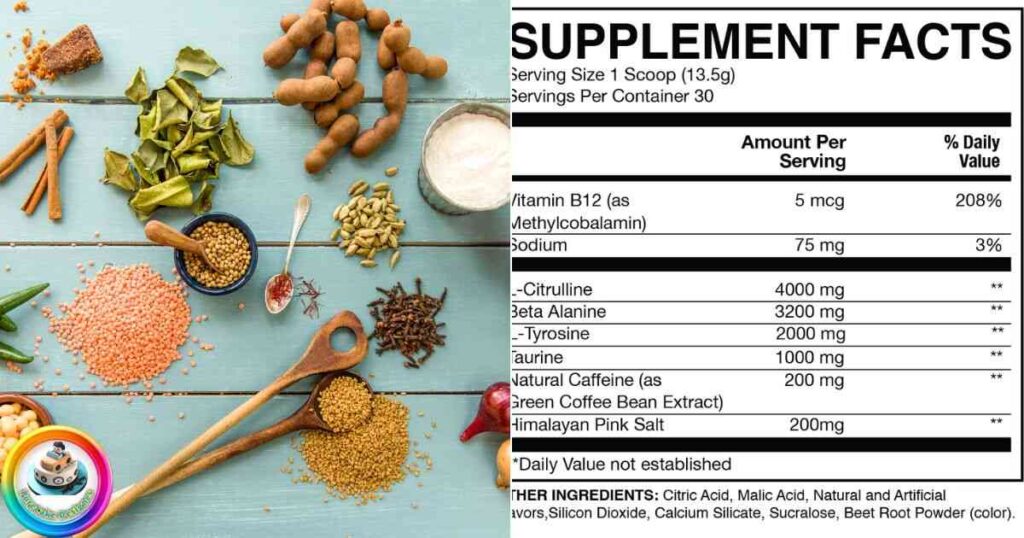Imagine presenting a cake that not only tastes divine but also captures the essence of springtime charm. The Homemade Robin Egg Chocolate Cake does just that, offering a moist, rich chocolate base adorned with a delicate blue frosting, artfully speckled to resemble a robin’s egg.
This delightful dessert is perfect for Easter celebrations, spring gatherings, or any occasion where you wish to impress with both flavor and presentation. In this comprehensive guide, we’ll walk you through each step to create this stunning cake in your own kitchen, ensuring it’s as enjoyable to make as it is to eat.
What is a Robin Egg Cake?

A Robin’s Egg Cake is a delightful dessert inspired by the natural beauty of robin’s eggs. This cake features a distinctive robin’s egg blue frosting, often achieved by adding a touch of blue food coloring to buttercream or fondant. To mimic the speckled appearance of real robin’s eggs, bakers typically flick edible brown coloring onto the cake’s surface. This design not only captures the essence of spring but also adds a charming, rustic touch to any dessert table.
Why You’ll Love This Robin’s Egg Chocolate Cake
Visual Appeal
The robin egg cake design is truly eye-catching. Its soft blue hue combined with delicate speckles creates a whimsical yet elegant look, making it a showstopper at gatherings. Whether for a festive occasion or a simple family dinner, this cake’s appearance is sure to impress.
Skill Level
Creating an easy robin egg cake is well within reach, even for novice bakers. The speckling technique involves using a clean brush to gently flick edible coloring onto the frosted cake, a method that’s both simple and forgiving. With basic baking tools and a bit of patience, anyone can achieve this charming design.
Versatility
This spring cake is perfect for various occasions. Its fresh and vibrant appearance makes it an ideal choice for Easter celebrations, baby showers, or any springtime gathering. Additionally, by adjusting the colors and decorations, the cake can be customized to suit different themes and events throughout the year.
Essential Ingredients

The Cake Base
Crafting a delectable chocolate cake requires key ingredients:
- Sugar
- Cocoa powder
- Butter
- Hot water
- Buttermilk
- All-purpose flour
- Baking soda
- Eggs
- Vanilla extract
For substitutions, consider using vegetable oil instead of butter for added moisture, or sour cream in place of buttermilk to achieve a tender crumb.
The Perfect Frosting
To achieve the signature robin egg blue frosting, start with a classic buttercream base. Incorporate a few drops of blue gel food coloring until you reach the desired hue. Alternatively, a cream cheese frosting can be used for a tangy contrast to the rich chocolate cake.
Decorating Materials
To create the characteristic speckled cake decoration, you’ll need:
- Cocoa powder
- Vanilla extract or vodka
- A clean, food-safe brush
Mix the cocoa powder with the liquid to form a paint-like consistency, then flick it onto the frosted cake using the brush for a speckled effect.
Required Equipment
Baking Tools
Ensure you have the following cake baking equipment:
- Mixing bowls
- Measuring cups and spoons
- Electric mixer
- Spatula
- 8-inch round cake pans
- Cooling rack
These tools are essential for preparing and baking your cake layers evenly.
Decorating Tools
To achieve the robin’s egg effect, gather these cake decorating tools:
- Offset spatula for smooth frosting application
- Piping bags (if adding additional decorative elements)
- Food-safe brush for speckling
These tools will help you decorate your cake with precision and creativity.
Step-by-Step Instructions
Preparing Your Workspace
Before you begin, organize your cake preparation area. Gather all ingredients and equipment, ensuring they are within easy reach. Preheat your oven to the specified temperature, and prepare your cake pans by greasing and lining them with parchment paper. This setup streamlines the baking process and helps prevent potential mishaps.
Making the Cake Batter
In a large mixing bowl, combine the dry ingredients: sugar, cocoa powder, flour, and baking soda. In a separate bowl, whisk together the wet ingredients: melted butter, hot water, buttermilk, eggs, and vanilla extract. Gradually add the wet mixture to the dry ingredients, mixing until the chocolate cake batter is smooth and well combined. Be careful not to overmix, as this can lead to a denser cake texture.
Baking Process
Pour the batter evenly into the prepared cake pans. Place them in the preheated oven and bake for the recommended time, typically around 30-35 minutes, or until a toothpick inserted into the center comes out clean. Once baked, remove the cakes from the oven and allow them to cool in the pans for about 10 minutes. Then, transfer the cakes to a cooling rack to cool completely before frosting.
Creating the Perfect Frosting
To prepare the robin’s egg blue frosting, start by making a standard buttercream: beat softened butter until creamy, then gradually add powdered sugar, mixing until smooth. Add a splash of vanilla extract and a small amount of milk or cream to reach the desired consistency.
To achieve the robin’s egg blue color, add a few drops of blue gel food coloring, mixing thoroughly until the color is uniform. For the speckled effect, mix cocoa powder with a small amount of vanilla extract or vodka to create a thin paste. Using a clean brush, gently flick the mixture onto the frosted cake to create the speckles.
Assembly Guide
Leveling and Layering
To achieve a professional-looking cake assembly, start by leveling each cake layer using a serrated knife to remove any domed tops. Place the first layer on your serving plate, spread an even layer of frosting, then add the next layer. Repeat this process until all layers are stacked, ensuring each is aligned for a stable structure. This method creates a uniform appearance and provides a solid base for decoration.
Frosting Application
For a smooth finish, apply a thin “crumb coat” of frosting to seal in any loose crumbs. Refrigerate the cake for about 15 minutes to set the crumb coat. Next, apply a thicker layer of frosting, using an offset spatula to spread it evenly. Holding a bench scraper against the side of the cake while rotating it helps achieve a polished look.
Creating the Speckled Effect
To create the characteristic speckled decoration, mix cocoa powder with vanilla extract or vodka to form a thin paste. Dip a clean pastry brush into the mixture, then flick it onto the frosted cake to create random speckles, mimicking a robin’s egg. This technique adds a charming, natural touch to your cake.
Pro Tips for Success
Common Mistakes to Avoid
Avoid overmixing the batter, which can lead to a dense cake. Ensure your frosting isn’t too soft, as it may not hold its shape during decoration. If your icing is too stiff, it can tear the cake; adjust the consistency as needed. Properly preparing your cake pans and monitoring baking times can prevent common issues like sticking or overbaking.
Expert Techniques
For a professional finish, consider using a turntable to rotate the cake smoothly while applying frosting. Chilling the cake between frosting layers can help achieve sharper edges. Experiment with different piping tips for decorative borders or accents. Incorporating a simple syrup soak can add moisture and flavor to your cake layers, enhancing the overall taste and texture.
Storage and Make-Ahead Instructions
Unfrosted Cake Storage
To keep your cake layers fresh before decorating, wrap each layer tightly in plastic wrap, ensuring all surfaces are covered. Store them at room temperature for up to a week. For longer storage, place the wrapped layers in the freezer. When ready to use, transfer them to the refrigerator a day in advance to thaw gradually.
Decorated Cake Storage
Once your cake is fully decorated, it’s best to store it at room temperature under a cake dome or an inverted bowl to protect it from dust and air exposure. This method keeps the cake fresh for about four to five days. If your cake contains perishable fillings or frostings, such as those with dairy, refrigeration is necessary to prevent spoilage.
Freezing Guidelines
For extended storage, both unfrosted and frosted cakes can be frozen. Wrap unfrosted layers tightly in plastic wrap, then in aluminum foil, and freeze for up to three months. For frosted cakes, first chill the cake in the refrigerator to harden the frosting, then wrap it securely before freezing. When ready to enjoy, thaw the cake in the refrigerator overnight before bringing it to room temperature.
Read This Blog: Butter Melted Cookies with Marshmallows: The Ultimate Guide
Serving Suggestions
Presentation Ideas
Enhance your cake’s visual appeal by placing it on a decorative cake stand. Garnish with edible flowers or arrange chocolate eggs around the base to complement the robin’s egg theme. These touches add elegance and make the cake a centerpiece for any occasion.
Accompaniments
Pair your robin’s egg cake with a light beverage, such as herbal tea or a glass of chilled milk, to balance the rich flavors. A scoop of vanilla ice cream or a dollop of whipped cream on the side can also enhance the dessert experience.
Also Read This Blog: The Ultimate Guide to Faux Swiss Meringue Buttercream
Variations and Adaptations
Different Flavor Options
While the traditional robin’s egg cake features a chocolate base, you can experiment with other flavors. Consider a lemon cake with blueberry jam filling for a fresh, springtime twist, or an almond cake paired with orange zest-infused frosting. These variations offer delightful alternatives to suit different palates.
Size Adjustments
To accommodate different gatherings, you can scale the recipe up or down. For a larger crowd, double the ingredients to create a tiered cake. For smaller gatherings, halve the recipe to make a single-layer cake or cupcakes. Adjust baking times accordingly, keeping a close eye to prevent overbaking.
FAQ
What is a Robin’s Egg Cake?
A Robin’s Egg Cake is a dessert designed to resemble a robin’s nest and eggs, often featuring a chocolate cake base with blue-tinted frosting and candy eggs as decoration.
How do I achieve the speckled effect on the cake?
To create the speckled effect, mix cocoa powder with vanilla extract or vodka to form a thin paste. Dip a clean pastry brush into the mixture, then flick it onto the frosted cake to create random speckles, mimicking a robin’s egg.
Can I use a different type of cake for a Robin’s Egg Cake?
Yes, you can use various cake flavors such as vanilla, chocolate, or lemon. Choose your favorite flavor to suit your taste preferences.
How do I store leftovers of a Robin’s Egg Cake?
Store leftover cake in an airtight container in the refrigerator for up to 3-4 days. Allow it to come to room temperature before serving for the best taste and texture.
Can I use store-bought frosting for a Robin’s Egg Cake?
While homemade frosting is recommended for its flavor and texture, you can use store-bought frosting if you’re short on time. Just make sure to tint it with blue food coloring to achieve the desired color.
Conclusion
Creating a Robin’s Egg Cake is a delightful way to celebrate spring and Easter. Its charming appearance and delicious taste make it a centerpiece at any gathering. By following the steps outlined in this guide, you can craft a cake that not only looks impressive but also tastes wonderful. Whether you’re an experienced baker or a beginner, this recipe is approachable and rewarding. Enjoy the process and the smiles it brings to your table.

